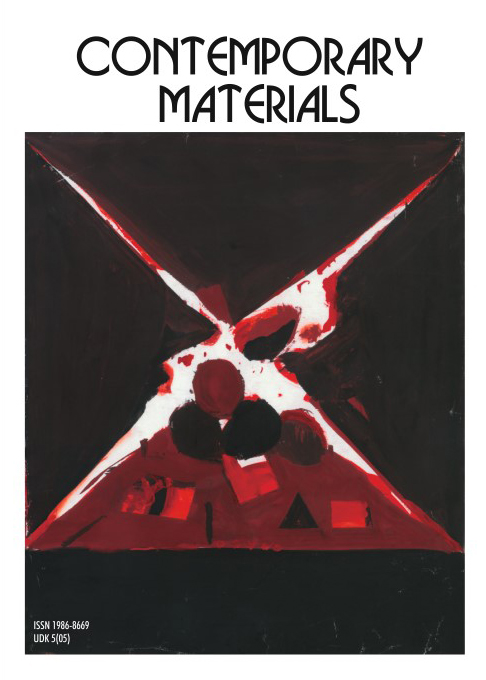COLORIMETRIC CHARACTERISTICS OF ULTRASOUND DYED TEXTILES WITH EXTRACTS OF Reynoutria japonica AND COPPER-BASED MORDANTS
DOI:
https://doi.org/10.7251/COMEN2401053RAbstract
In this study, the influence of the type of extract (leaf and rhizome of R. japonica) and the type of copper-based mordant (copper (I) oxide - Cu2O and copper (II) sulfate - CuSO4) on the spectroscopic and antimicrobial properties of dyed wool knitwear was investigated. The antimicrobial activity of all samples was tested against the bacteria Staphylococcus aureus and Escherichia coli and the yeast Candida albicans. It was observed that knitted fabrics dyed with R. Japonica leaf extract and Cu2O show a better antimicrobial effect on S. aureus bacteria compared to knitted fabrics dyed with the addition of CuSO4. However, in the case of knitwear dyed with R. Japonica rhizome extract, we have the opposite case; CuSO4 proved to be better as a mordant. Conductance was measured using the dielectric spectroscopy method in the frequency range from 20 Hz to 100 kHz. The highest increase in conductivity was observed in the sample dyed with the rhizome extract of R. Japonica and Cu2O, where the increase at the frequency of 24 kHz was 20 times higher compared to the initial sample. The obtained results of the coloration spectrophotometric analysis of the samples show that the highest colour strength (K/S) was achieved with the sample dyed with R. Japonica leaf extract and CuSO4. The obtained results indicate the possibility of using the tested knitwear for antimicrobial as well as electro protection.
